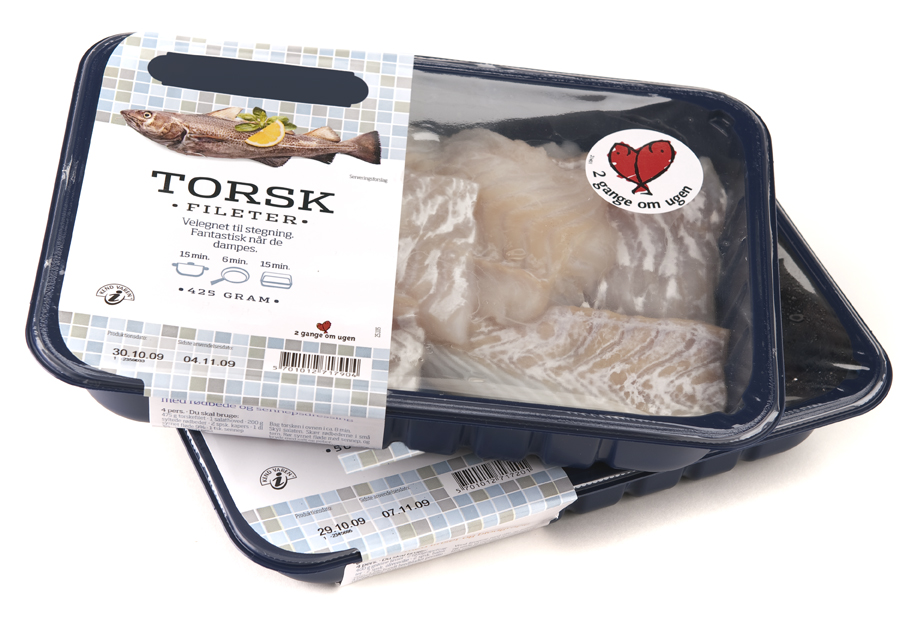Modified Atmosphere Packaging of Fish and Seafood

Extending the shelf life of fresh fish and seafood such as shrimp and prawn is a particular challenge because of the unique nature of the product and because there are many types of fish that have different characteristics and therefore different requirements for packaging. The flesh of fish and seafood contains little or no carbohydrate so bacteria present in the gut and gills of fish begin to act on the protein of the tissue very quickly. Enzymes in the flesh also degrade the tissue. The high water content of the tissue of fish and shellfish is at a neutral pH – it is neither acid nor alkaline – and these conditions favour rapid activity of bacteria and enzymes to cause deterioration, resulting in the production of a range of chemicals that give bad fish its characteristic unpleasant odour. Fish that have a high content of fat, such as herring and mackerel, are also susceptible to oxidation by the air resulting in rancidity. The key to keeping fish as fresh for as long as possible is to maintain a low temperature – as close to 0oC as possible.
One of the big challenges in choosing a suitable modified atmosphere to prevent the proliferation of bacteria is that some microbes are aerobic – they thrive in oxygen – while others are anaerobic where the absence of oxygen encourages their growth. So a careful balance is needed.
A proportion of carbon dioxide in the modified atmosphere packaging (MAP) for raw fish, above 20 per cent and typically around 50 per cent, is effective in inhibiting the growth of common aerobic bacteria. When CO2 dissolves in water it creates a weakly acidic solution and this can slow down the growth of these bacteria. Oxygen also helps to preserve the colour of the flesh. However, in very fatty fish little or no oxygen is best to avoid rancidity. Seafood such as prawns are packaged in an atmosphere typically containing only carbon dioxide and nitrogen. In this way, under the correct conditions of refrigeration, shelf life of raw fish and seafood can be doubled or even trebled from a few days to two or three weeks in some cases.
One of the big challenges in choosing a suitable modified atmosphere to prevent the proliferation of bacteria is that some microbes are aerobic – they thrive in oxygen – while others are anaerobic where the absence of oxygen encourages their growth. So a careful balance is needed.
A proportion of carbon dioxide in the modified atmosphere packaging (MAP) for raw fish, above 20 per cent and typically around 50 per cent, is effective in inhibiting the growth of common aerobic bacteria. When CO2 dissolves in water it creates a weakly acidic solution and this can slow down the growth of these bacteria. Oxygen also helps to preserve the colour of the flesh. However, in very fatty fish little or no oxygen is best to avoid rancidity. Seafood such as prawns are packaged in an atmosphere typically containing only carbon dioxide and nitrogen. In this way, under the correct conditions of refrigeration, shelf life of raw fish and seafood can be doubled or even trebled from a few days to two or three weeks in some cases.




